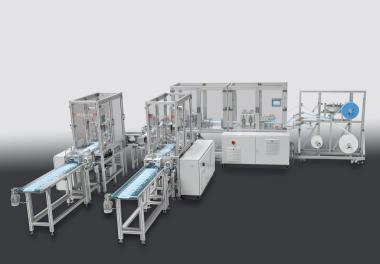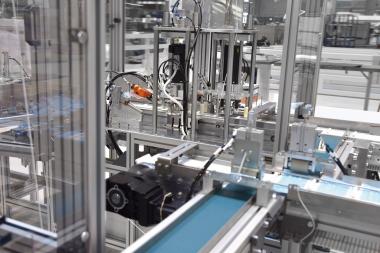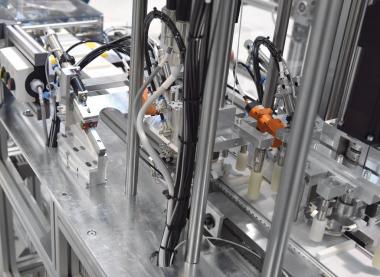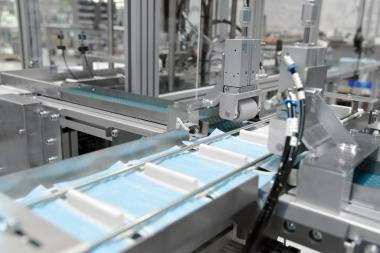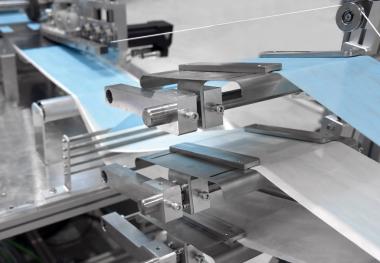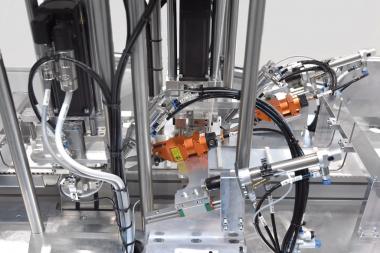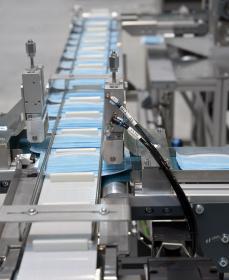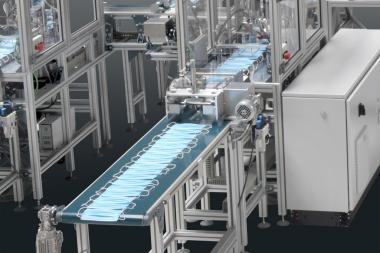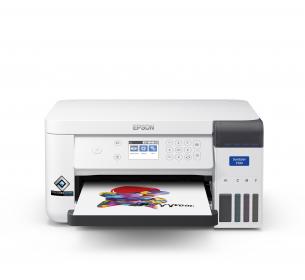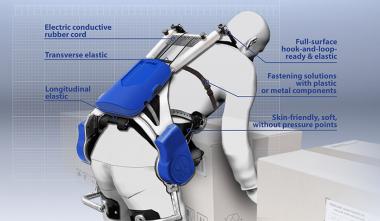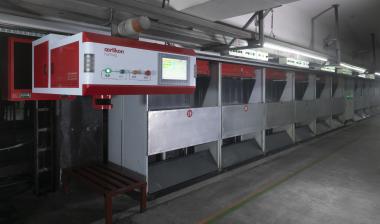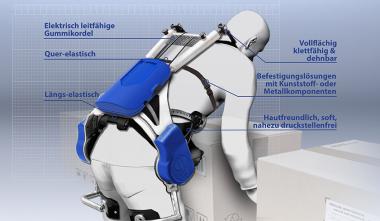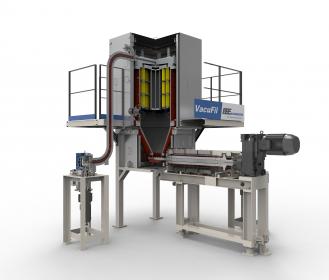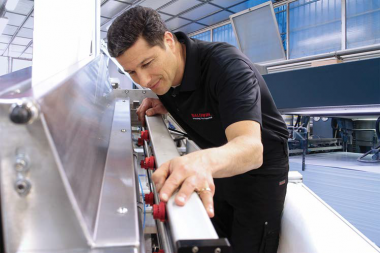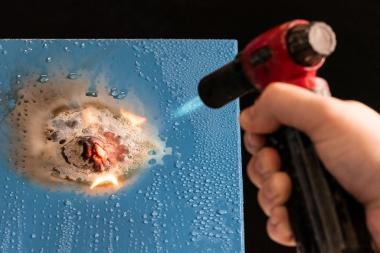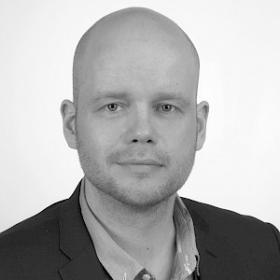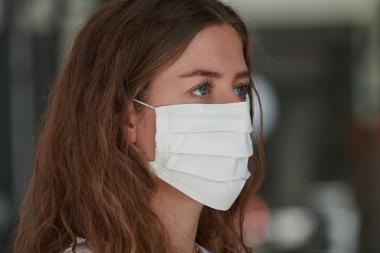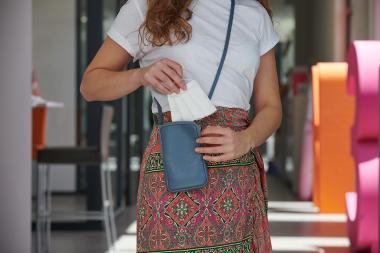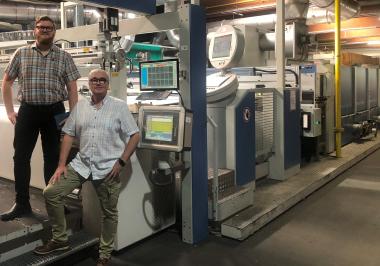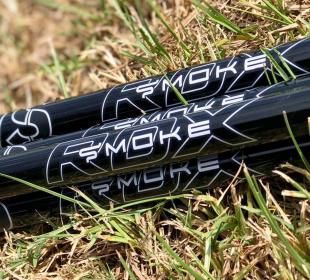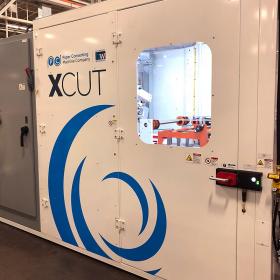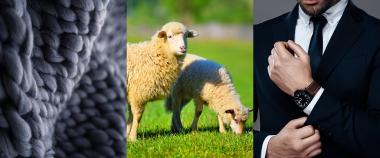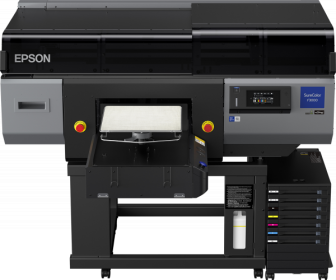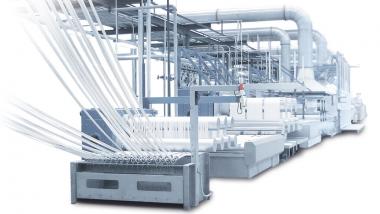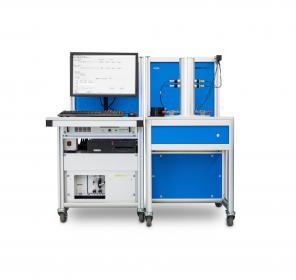TU Ilmenau/TITK: Platten-Extrusionsanlage für gemeinsame Projekte geht in Betrieb
Die langjährige strategische Kooperation des Thüringischen Instituts für Textil- und Kunststoff-Forschung Rudolstadt e.V. (TITK) mit der Technischen Universität Ilmenau erreicht einen neuen Meilenstein: Beide Partner nahmen jetzt eine Anlage zur Herstellung thermoplastischer Leichtbauplatten in Betrieb. Damit wurde eine moderne gerätetechnische Voraussetzung geschaffen, um die Zusammenarbeit zwischen dem an der TU ansässigen Thüringer Innovationszentrum Mobilität (ThIMo) und dem TITK insbesondere im Kompetenzfeld Kunststofftechnik und Leichtbau zu erweitern.
Die Investition wird aus Mitteln des Landes Thüringen und der EU im Rahmen der Grundfinanzierung des Thüringer Innovationszentrums Mobilität (ThIMo) gefördert. In Abstimmung zwischen dem TITK und dem ThIMo und auf Grundlage eines Nutzungs- und Überlassungsvertrages wurde die Anlage im Technikum des TITK aufgestellt. Das TITK ist seit vielen Jahren An-Institut der TU Ilmenau.
„Um unsere wissenschaftliche Zusammenarbeit voranzutreiben, läuft derzeit auch die gemeinsame Berufung der Professur Kunststofftechnik an der TU“, berichtet der geschäftsführende Direktor des TITK, Benjamin Redlingshöfer. „Damit festigen wir unsere Kooperation zwischen Grundlagenforschung auf der einen und wirtschaftsnaher Forschung auf der anderen Seite“, ergänzt der vorläufige Leiter der Uni, Prof. Dr. Kai-Uwe Sattler.
Beiden Teilbereichen der Forschung soll nun auch die neue Plattenanlage dienen. Sie kommt gemeinsamen Entwicklungsprojekten im Bereich kunststoffbasierter Halbzeuge und parallel dazu der Ausbildung von Studenten zugute. „Mit dieser Anlage wurde eine weitere Voraussetzung geschaffen, um auch den Transfer gemeinsamer Forschungsergebnisse in die Wirtschaft zu forcieren“ “, betont Prof. Dr. Klaus Augsburg, Projektleiter ThIMo an der TU Ilmenau. „Diese neu geschaffene wissenschaftlich-experimentelle Plattform ist mit unserem Technikum Kunststofftechnik passfähig“, so Augsburg weiter.
„Mit der Plattenanlage stellen wir Halbzeuge mit Faserverstärkung her, etwa aus Naturfaser-, Glasfaser- oder Carbonfaserverstärktem Kunststoff. Die Platten sollen insbesondere für Leichtbauanwendungen in verschiedenen Mobilitätssystemen zur Verfügung stehen“, sagt die zuständige Abteilungsleiterin am TITK, Dr. Renate Lützkendorf. Je nach Beschaffenheit des Ausgangsstoffs seien dabei auch Verbunde mit verschiedenen Schichten möglich.
Als Ausgangsmaterialien kommen sowohl marktverfügbare Kunststoffgranulate als auch Neuentwicklungen zum Einsatz. Darunter ein mit Partnern entwickeltes Granulat aus recycelten Carbonfasern. Speziell mit diesem Material lässt sich einerseits eine sehr hohe Steifigkeit erreichen. „Andererseits kann damit auch das Thema Leitfähigkeit oder Abschirmung erschlossen werden. So lassen sich Platten mit funktionellen Eigenschaften produzieren“, ergänzt Lützkendorf.
Erforscht werden zudem komplette Prozesse zur Herstellung neuer Faserverbundhalbzeuge. Dabei stehen verschiedene Aspekte im Mittelpunkt. „Zum Beispiel die Auswirkung von Füllstoffen auf die Plattenqualität und ihre Funktion, die Dicken, mit der diese Halbzeuge herstellbar sind, und ob sich die Platten auch schäumen lassen, um noch weiteres Gewicht einzusparen“, erläutert Dr. Thomas Reußmann, stellvertretender Abteilungsleiter am TITK.
Neben einer wesentlichen Zielgruppe beider Partner, der Automobilindustrie, können auch Themen anderer Branchen, wie z.B. der Verpackungsmittelindustrie bedient werden. Die Entwicklungsergebnisse werden durch Materialprüfungen am TITK und am ThiMo evaluiert.
TITK








